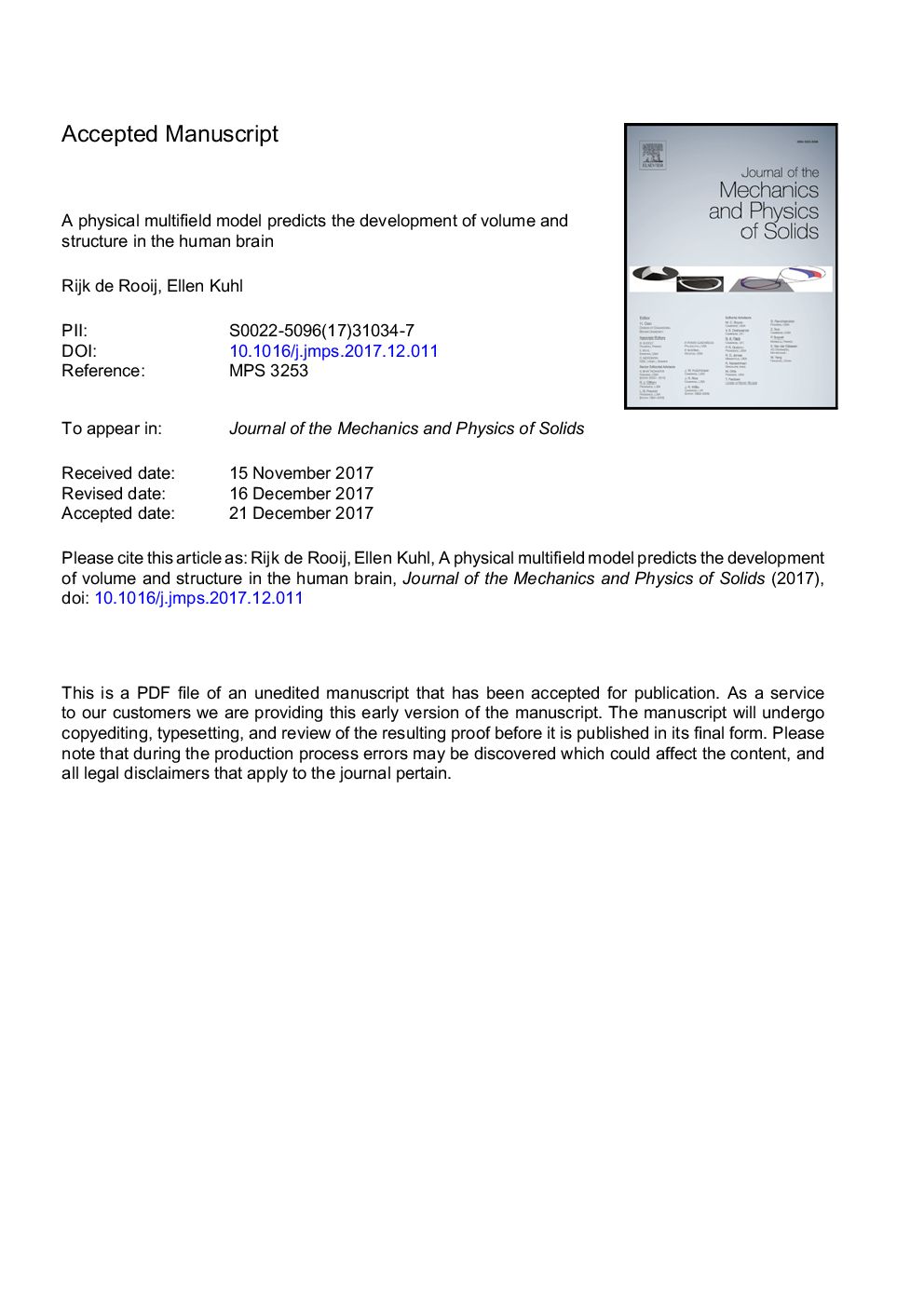| Article ID | Journal | Published Year | Pages | File Type |
|---|---|---|---|---|
| 7177532 | Journal of the Mechanics and Physics of Solids | 2018 | 15 Pages |
Abstract
The prenatal development of the human brain is characterized by a rapid increase in brain volume and a development of a highly folded cortex. At the cellular level, these events are enabled by symmetric and asymmetric cell division in the ventricular regions of the brain followed by an outwards cell migration towards the peripheral regions. The role of mechanics during brain development has been suggested and acknowledged in past decades, but remains insufficiently understood. Here we propose a mechanistic model that couples cell division, cell migration, and brain volume growth to accurately model the developing brain between weeks 10 and 29 of gestation. Our model accurately predicts a 160-fold volume increase from 1.5Â cm3 at week 10 to 235Â cm3 at week 29 of gestation. In agreement with human brain development, the cortex begins to form around week 22 and accounts for about 30% of the total brain volume at week 29. Our results show that cell division and coupling between cell density and volume growth are essential to accurately model brain volume development, whereas cell migration and diffusion contribute mainly to the development of the cortex. We demonstrate that complex folding patterns, including sinusoidal folds and creases, emerge naturally as the cortex develops, even for low stiffness contrasts between the cortex and subcortex.
Related Topics
Physical Sciences and Engineering
Engineering
Mechanical Engineering
Authors
Rijk de Rooij, Ellen Kuhl,
